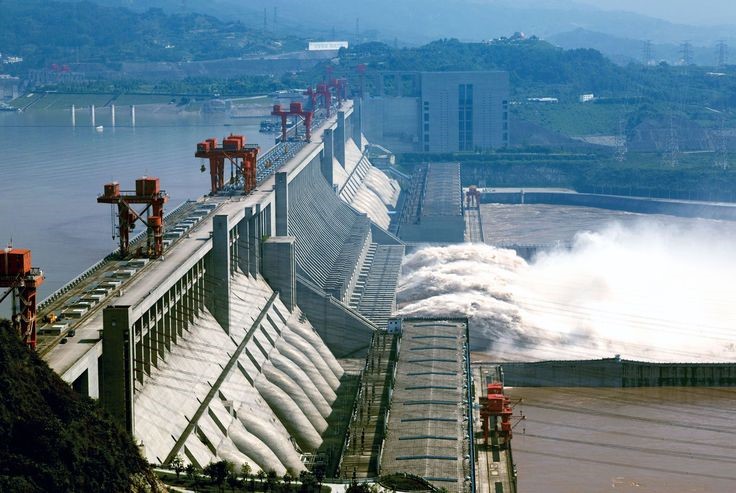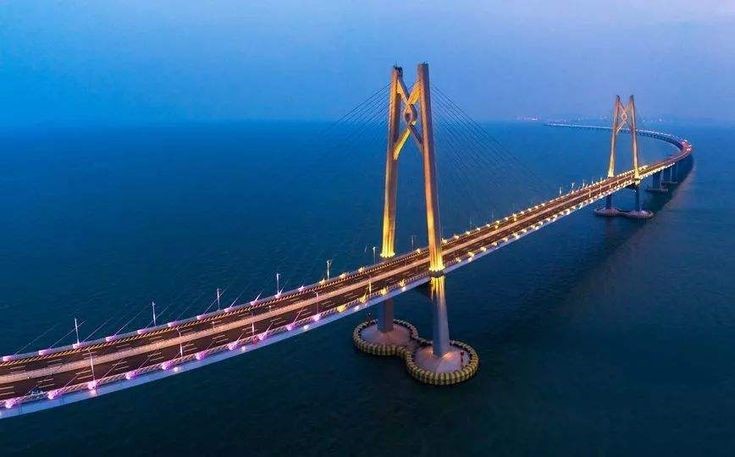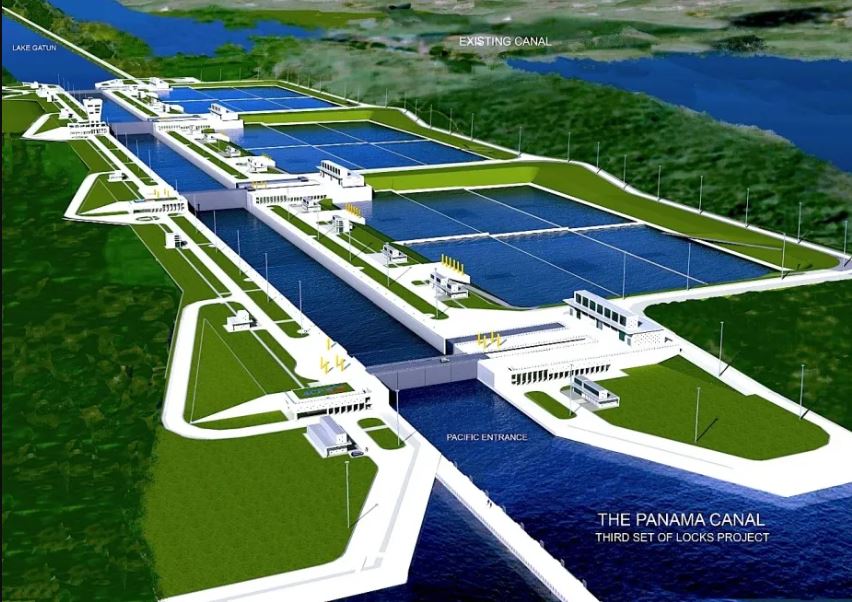Civil engineering continues to be at the heart of development, shaping the world’s cities, transport systems, and infrastructure that connect people and economies. It’s a field that blends creativity with technology to build modern infrastructure that transforms how we live, work, and move. What makes today’s civil engineering projects truly iconic isn’t just their scale or design but their innovative use of sustainable construction materials and efficient planning methods that inspire future engineers worldwide. These innovations show how engineering excellence can solve real-world challenges while paving the way for a more sustainable future. In this blog, we’ll explore seven real-world marvels that highlight the applications of civil engineering—from bridges that defy gravity to eco-friendly skyscrapers redefining urban skylines.
7 Iconic Real-World Civil Engineering Projects:
1) Burj Khalifa, Dubai (Mastering Vertical Engineering)

Standing tall at over 828 meters, the Burj Khalifa holds its place among the tallest buildings in the world, symbolizing how far modern skyscrapers have come. Its strength lies in the innovative buttressed core structural system, which ensures stability against wind forces and vertical loads. The tower also integrates advanced elevator technology to move people efficiently across 160+ floors. Beyond height, it showcases the future of commercial infrastructure with smart building features like smart glass technologies that reduce energy use and maintain interior comfort.
2. Channel Tunnel, UK–France (Advanced Subsea Engineering)

The Channel Tunnel, connecting the United Kingdom and France, remains one of the most impressive engineering marvels of the 20th century. Stretching over 50 kilometers beneath the English Channel, this underwater tunnel handles both passenger and freight transport daily. Constructed using high-precision tunnel boring machines, it demanded detailed geotechnical analysis to ensure safety and durability under intense pressure and marine conditions. The Channel Tunnel continues to be a benchmark for global subsea infrastructure.
3. Three Gorges Dam, China (Engineering Renewable Energy)

As the largest hydroelectric project ever built, the Three Gorges Dam is a model of innovative water resource planning and environmental engineering. It plays a vital role in flood management, renewable energy production, and regional navigation. Modern technologies such as IoT sensors and predictive monitoring help track dam performance and optimize energy output in real time. This project stands as proof that large-scale infrastructure can coexist with sustainability goals.
4. Delhi Metro, India (Pioneering Sustainable Urban Transit)

A proud example of an Indian civil engineering project with a global impact, the Delhi Metro transformed public transportation in one of the world’s busiest cities. Its solar-powered stations, energy-efficient design, and regenerative braking systems reduce carbon emissions while cutting operational costs. Recognized internationally, the Metro remains a model for sustainable urban transportation projects, balancing convenience, affordability, and environmental responsibility.
5. Millau Viaduct, France (Combining Aesthetics with Structural Excellence)

The Millau Viaduct in France holds the record as the tallest bridge in the world, with towers soaring higher than the Eiffel Tower. Its design reflects a perfect blend of architectural beauty and structural efficiency. Engineers used modular construction techniques to assemble the massive sections with precision, minimizing environmental disruption. The result is a breathtaking bridge that marries art with engineering science.
6. Hong Kong–Zhuhai–Macau Bridge (Mega Marine Engineering)

The Hong Kong–Zhuhai–Macau Bridge is a 55-kilometer-long feat of marine construction linking three major cities across the Pearl River Delta. Built to withstand harsh coastal conditions, it employs anti-corrosion materials and advanced predictive maintenance systems to ensure long-term performance. This project redefines mega marine engineering, enhancing regional trade and connectivity across Asia.
7. Panama Canal Expansion (Transforming Global Trade)

The Panama Canal Expansion Project revolutionized international logistics by accommodating larger ships through redesigned locks and channels. Integrated automated control systems enable precise vessel navigation, while effective water resource management ensures environmental balance. This modern upgrade to a historic passage proves how civil engineering continues to drive global economic transformation through innovation and sustainability.
Key Secrets Behind Successful Civil Engineering Projects
Behind every successful civil engineering project lies a mix of strategic planning, innovation, and sustainable thinking. It all starts with a strong foundation in design and data-driven analysis—engineers study the terrain, materials, and load conditions long before construction begins. The growing use of sustainable construction materials like recycled steel, eco-friendly concrete, and low-emission composites ensures that today’s structures are both durable and environmentally responsible. Technology plays an equally vital role; tools such as Building Information Modeling (BIM), drones, and IoT sensors make it possible to monitor progress, predict maintenance needs, and enhance overall efficiency. But even with advanced tools, success ultimately depends on the people behind the project—a skilled workforce that collaborates effectively and maintains high standards of safety and quality throughout. The best projects also consider their broader impact, aligning engineering goals with environmental and social responsibility. In essence, great civil engineering isn’t just about building structures—it’s about creating modern infrastructure that stands the test of time while serving communities responsibly.
Impact of Iconic Civil Engineering Projects
Iconic civil engineering projects do more than shape skylines—they redefine progress. Each innovation pushes boundaries, advancing technology and setting new standards for design, safety, and efficiency. These landmarks serve as living examples of how civil engineering applications can transform cities, improve connectivity, and solve complex challenges. By integrating smart materials, renewable systems, and digital tools, such projects play a vital role in promoting sustainability across the construction industry. They also act as powerful catalysts for driving economic growth, generating employment, boosting tourism, and enhancing trade networks. From mega dams that power nations to metro systems that ease urban congestion, the influence of civil engineering extends far beyond physical structures—it builds stronger economies, smarter cities, and a more sustainable future for everyone.
Conclusion
The 7 Iconic Real-World Civil Engineering Projects and Their Applications highlight how innovation, precision, and sustainable thinking continue to redefine modern infrastructure. From towering skyscrapers to complex transportation systems, these projects prove how civil engineers turn vision into reality through creativity and technology. For students eager to follow in those footsteps, enrolling in a civil engineering course at CADD Centre is the perfect place to start. CADD Centre’s industry-based training equips learners with practical design skills, advanced software knowledge, and real-world project exposure—preparing them for successful civil engineering careers across global industries. With the right guidance and technical foundation, you won’t just study engineering—you’ll build the future.
FAQs
What are some of the most iconic civil engineering projects in the world?
Some of the most iconic civil engineering projects include the Burj Khalifa in Dubai, Channel Tunnel between the UK and France, Three Gorges Dam in China, Delhi Metro in India, Millau Viaduct in France, Hong Kong–Zhuhai–Macau Bridge, and the Panama Canal Expansion.
Which is the most challenging civil engineering project ever built?
The Channel Tunnel between the UK and France is among the most challenging civil engineering projects, involving underwater tunneling, high-pressure environments, and advanced geotechnical analysis for long-term durability.
How is technology transforming modern civil engineering projects in 2025?
Technologies such as Building Information Modeling (BIM), Artificial Intelligence (AI), IoT sensors, and 3D printing in construction are revolutionizing civil engineering projects in 2025, improving design accuracy, safety, and project efficiency.
How do civil engineering projects contribute to economic growth?
Major infrastructure projects boost employment, tourism, trade, and urban development, while improving transportation and connectivity between regions.
What role does CADD Centre play in civil engineering education?
CADD Centre provides industry-oriented Civil Engineering Courses that train students in advanced design tools, software like AutoCAD and BIM, and real-world project experience preparing them for successful global careers.




